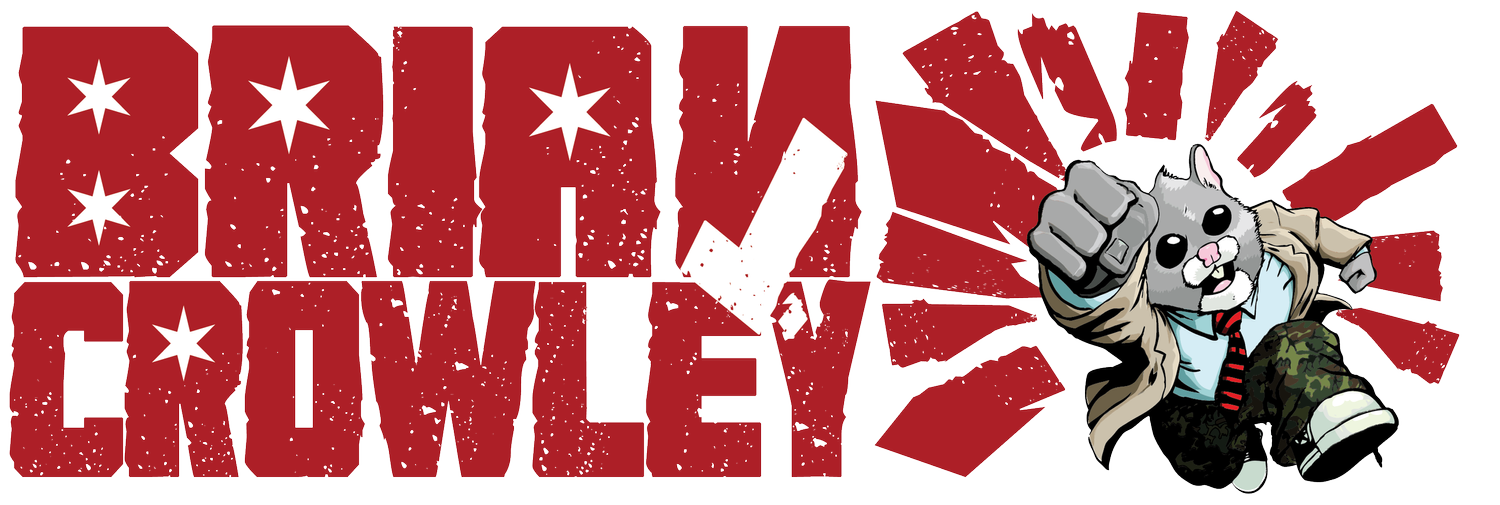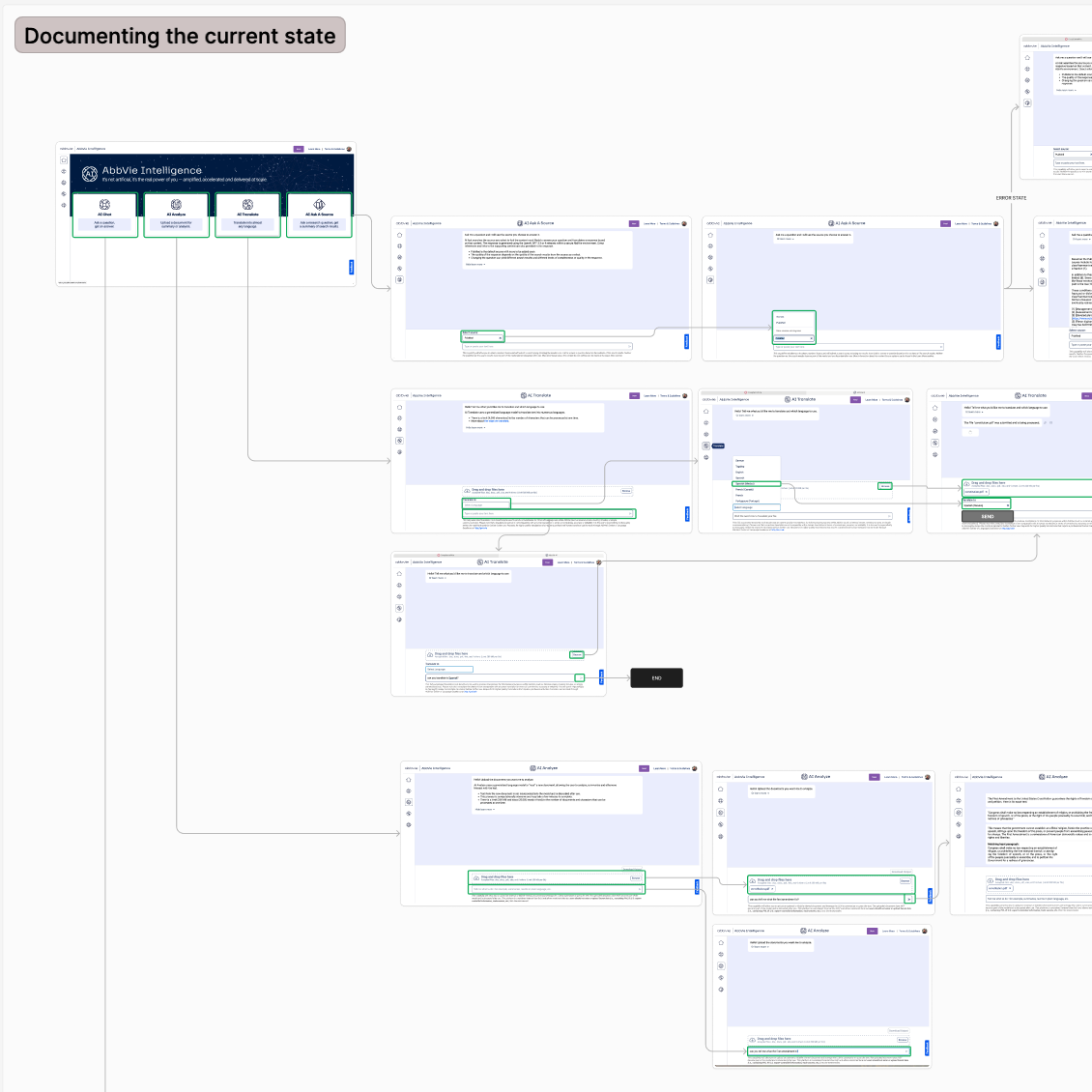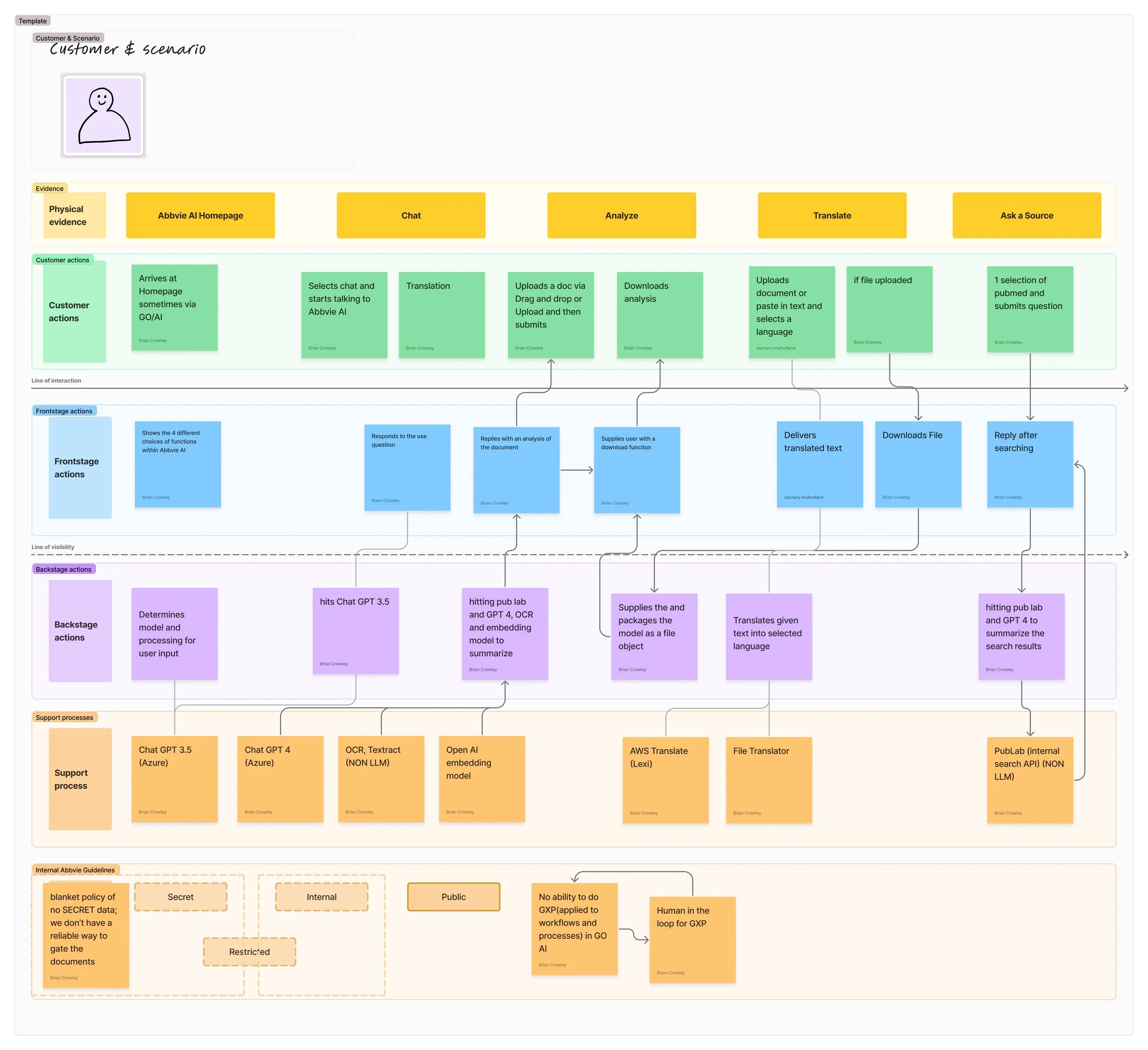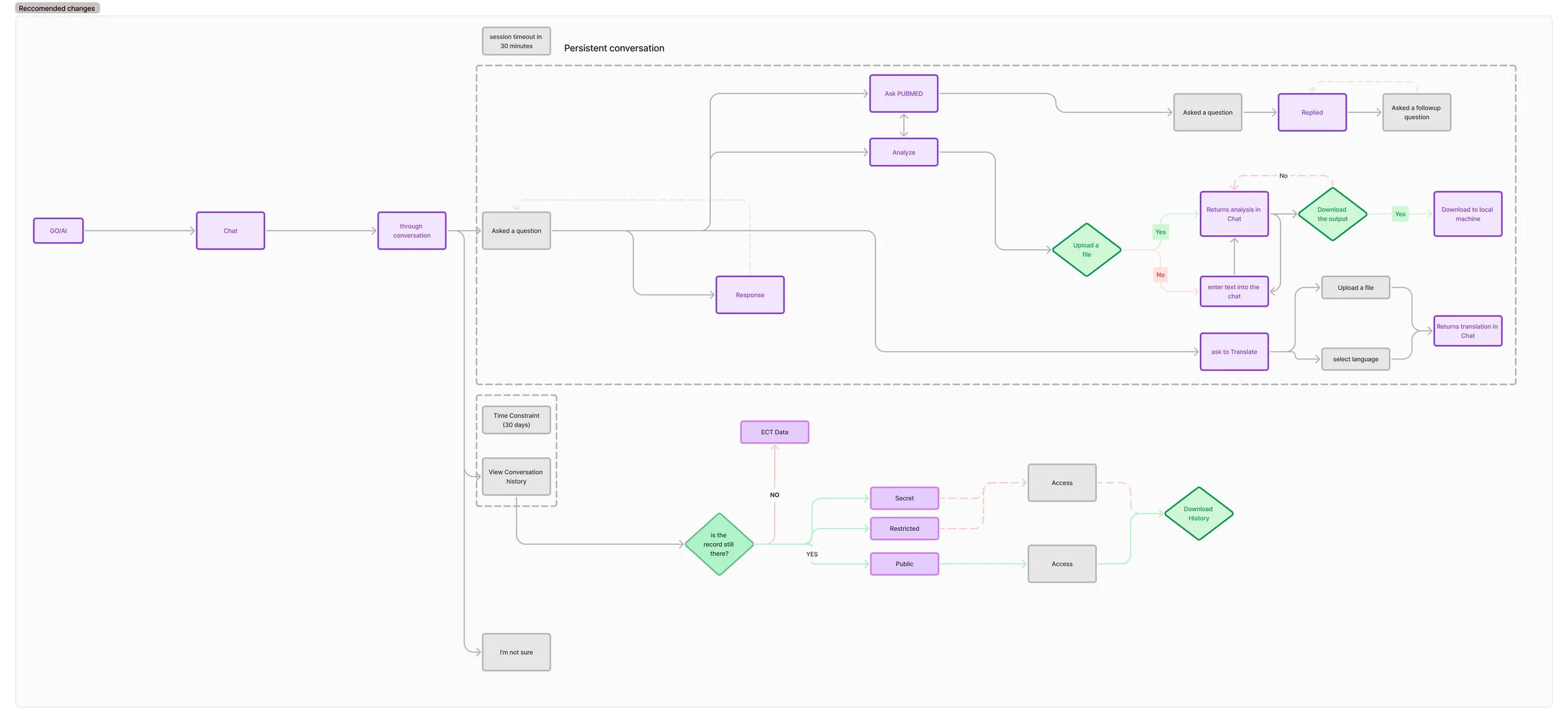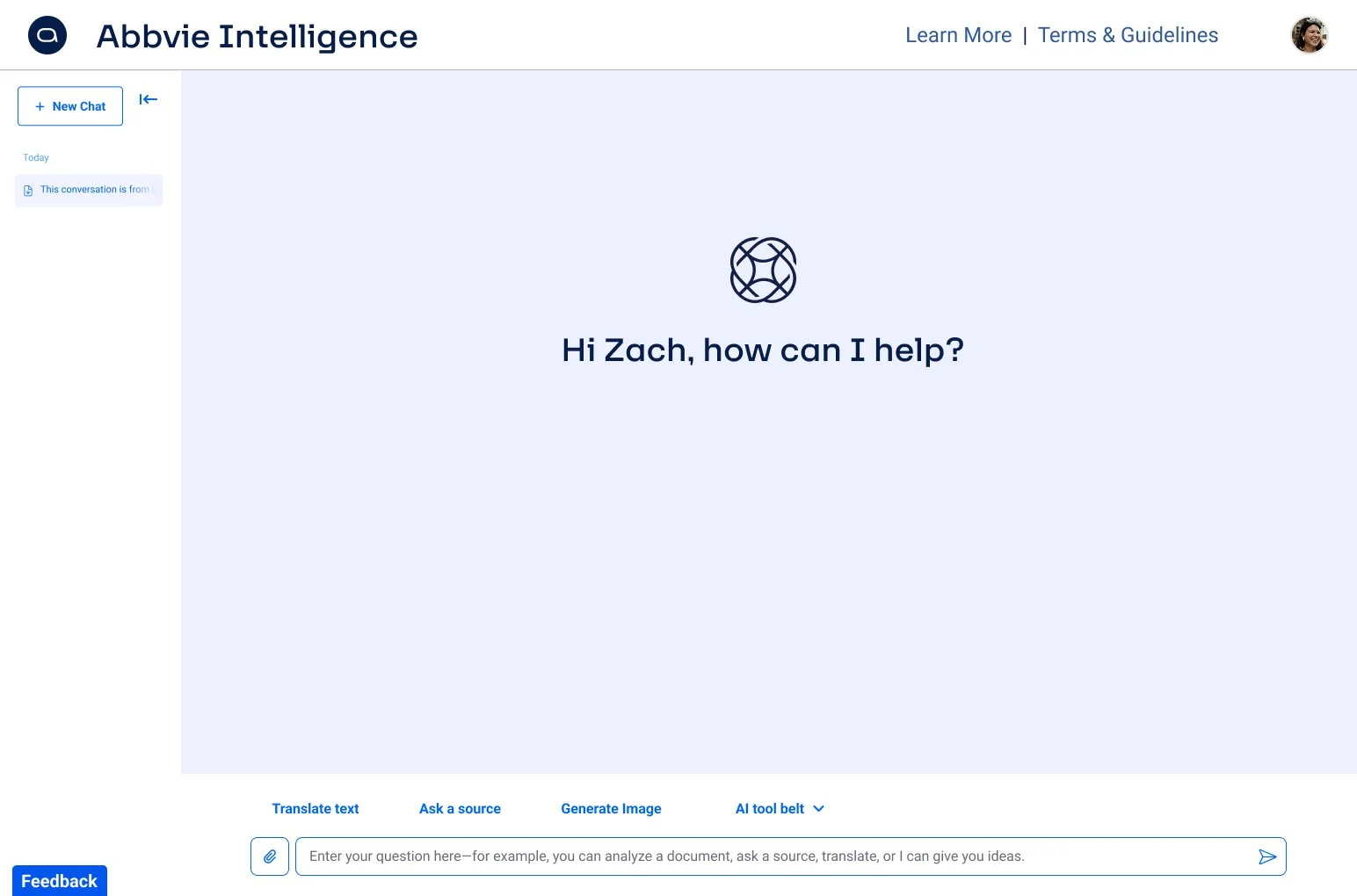Unifying a Fragmented AI Experience at AbbVie
Situation
AbbVie AI - a proprietary tool designed to provide internal users with ChatGPT-like capabilities - had become fragmented and confusing. Users were presented with five disjointed tools: Chat, Analyze, Translate, Ask a Source, and GO/AI. The interface suffered from unclear IA, high cognitive load, and lack of persistent conversation history.
Power users were frustrated by tool switching, while new users were hesitant or unaware of core features. Internal research highlighted significant user confusion, technical debt, and a drop-off in engagement.
BEFORE
Task
Lead a full redesign of the AbbVie AI experience with the goal of:
Reducing confusion by unifying the tools into a single, intuitive flow
Capturing persistent chat and context across sessions
Aligning user needs with internal platform capabilities
Improving adoption, trust, and utility—especially around AI-driven analysis and document support
Action
Prioritization with LUMA Methodology:
Facilitated a cross-functional prioritization workshop using a LUMA priority matrix. We evaluated dozens of pain points across user value vs. business value, identifying high-impact opportunities to streamline the experience, especially around chat memory, batch upload, and file analysis.User Research & Feedback Loops:
Conducted targeted interviews with a spectrum of users—from AI power users to new adopters. Patterns emerged around frustration with context switching between modes and the mental overhead of knowing which tool to use for which task.Service Blueprinting:
Mapped the current state of the fragmented AbbVie AI ecosystem using a detailed service blueprint. Visualized both frontstage and backstage processes across all five tools. Identified failure points in technical handoffs, UX ownership, and feedback visibility.Future-State Flow Design:
Reimagined the tool as a single, unified conversational AI interface. To help with adoption we also included mode toggling as a secondary control—anchored in the idea of “One Chat.” Integrated search, document analysis, and translation into one persistent chat session, respecting context and memory.Rapid Prototyping & Iteration:
Created wireframes and high-fidelity prototypes in Figma. Prototypes were tested with real users to validate improved task clarity, reduced hesitation, and better mental models. Emphasized accessible language, better feedback affordances, and graceful error states.DesignOps Integration:
Lead the AI transition team and had regular touchbases with cross functional partner.Established reusable components and content patterns to accelerate development. Partnered with engineers and AI/ML teams to align UI with platform capabilities (e.g., OpenAI GPT-4, AWS Translate, OCR pipelines). Introduced a collaborative Figma-to-handoff pipeline to reduce rework and enhance velocity.
Result
User confusion dropped significantly, with post-test users 3× more likely to correctly identify how to complete key tasks (e.g., uploading a document, summarizing a PDF, requesting translation).
Stakeholder buy-in secured to sunset the 5-tool model in favor of the unified experience.
Created scalable documentation and design patterns that will inform future iterations and AI expansions across AbbVie.
Prototype received greenlight for engineering development, with final refinements scoped for Q3 delivery.
